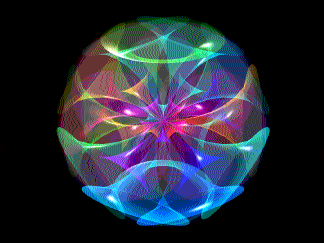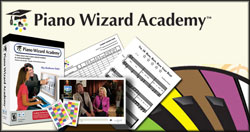One of my life long fascinations has been with the essence of things, and while I loved music, I did not study it as a child. In college when I approached it I was given a full dose of conventional music training as I audited college level music courses to satisfy my curiosity and thirst. Not only did this make no sense, no one seemed to be able to explain the basis of it with any real understanding or insight.
But gradually, deeper truths and other insights emerged, largely because I had one very unconventional professor of "group piano" who opened the doors to rethinking everything. Here are some of the insights I gathered and collected along the years that form my view of the "Elements" of music.
1. The universe's primary reality is energy and the different bands of energy are vibrational, and spiritual.
2. Music is a subset of that bandwidth of vibration.
3. Being part of that bandwidth, it obeys, reflects and communicates many of the laws of the universe on the vibrational level, and must express those relationships in "time".
4. Music reflects the binary quality of the universe (yin and yang) with the principles of tension and release in time. This is the primary engine of music. This can be achieved with many different strategies and tactics. The following are some of the ways tension and release are created and found in all known music cultures and can be considered universal.
- a) Dissonance and Consonance
- b) Repetition and variation or Creating Expectation and Deviation
- c) The opposite side of that coin is Confusion and order.
- d) Solo and group (for example, call and response, or a violin concerto)
- e) Home and "not home" or Known and unknown, old and new (Parts of the song are remembered, familiar and known, others not quite or very different, improvised, i.e., jazz)
5, Music structures" like" to be "round".
- a) Rhythms repeat and different parts of the same length can be represented usefully as concentric circles on a log. Some very elaborate rhythms like Classical Indian music will have circles within larger circles like those created by the children's drawing game Spirograph or the inner workings of gears on a clock for second, minute and hour.
- b) Harmonic patterns can be cyclical like typical Blues pattern.
- c) Tonally no matter how far developmentally the harmonies go they like to come "home" to the starting tonality or key. The exceptions prove the "rule".
- d) Melodic song forms tend to circle back to repeat the beginning melody. Some examples from http://www.smccd.edu:
- i) "AAA" Strophic – A melody is repeated, each time with different words. Sheila Davis calls this “AAA” form, since we often get just 3 repetitions in popular music, although many repetitions may be used.
- ii) "ABABAB" Verse-Chorus or Verse-Refrain – a series of verses (changing lyrics) alternates with an unchanging refrain. The refrain is often called the “chorus,” because it is common for verses to be sung by a soloist and the soloist to be joined by multiple voices (the “chorus”) singing in the refrain.
iii) "AAB" Blues – 12-bar most common; AAB pattern in lyrics and melody (often a “question-question-answer” pattern). Three 4-bar phrases. Blues variants – 8-bar, 16-bar; balanced phrases (music and lyrics). - iv) "AABA" 32-bar AABA form. In songs from the 20s, 30s & 40s, many songs have rambling introductions which lead to 32-bar AABA structures. The A phrases often come to harmonic closure; the B or bridge phrase often provides harmonic, rhythmic, melodic or textural contrast. Often extended or expanded (for example, AABAA or AABABA) or with a coda Allen Forte’s Listening to Classic American Popular Songs explores this form in detail.
- v) Through-Composed - Some songs, particularly in the art-song tradition (epitomized by Schubert), are “through-composed,” meaning that there are no unvaried repeats of musical ideas. This is very rare in popular music. Again the exception proves the rule.
6. 12 is a key number to understand the geometry of music, especially in harmony and rhythm.
- a) Western classical harmony, especially since Bach, uses the number 12 to create a circular interrelated harmonic system and subdivide the scales, and keys into related and distant tonalities so music can drift near and far yet always find a way "home". You can think very usefully of the music system as being in "base 12" and suddenly the chromatic scale, with an ever rising spiral of tones gives understanding to the circle of fifths and concepts like modulation (moving from one key to another) with rhyme and reason.
- b) African and other complex rhythms use the number 12 as a common denominator to subdivide rhythms into 1, 2, 3, 4, 6 and 12 note patterns and interlocking and contrasting cycles of 2 against 3, or 3 against 4.
- c) 12 is actually a very early and useful number for subdividing and sharing things, hence its prevalence in our culture in the clock, months of the year, the unit "dozen", the inches in a foot, etc. These circular cyclical aspects of the clock and months of the year as well as the ability to subdivide easily like with a dozen donuts makes music less mysterious to understand when these concepts are brought in as analogies and tools. 12 doubled is 24 (hours), tripled is 36, then each of those divided by ten gives us 360 degrees of the circle. 12 works with circles and cycles to divide and recombine more easily and music becomes richer and more diverse when it is leveraged, and so the combinations of European and African traditions (US, Brazil, South and West Africa, Caribbean) are amongst the most popular in the world.
7) Music can be organized and self reflective, and that order can be called a language. Many parallels with human language can be found and leveraged to facilitate learning music.
- a) Language is aural first, then written, then analyzed for structure (grammar). The structure is derived after the fact, but the verbal practice and expression, however unorthodox or illogical, is primary. Music is similar, and the theory and notation should not be considered primary, but learned after musical fluency and competence are there, the way we learn to speak a language then to recognize its written representation, and then its grammar, ideal learning means play first, then read what you already know how to play, then analyze what you played.
- b) UNLIKE language, music is in its richest forms, played together and in harmony. Language is sequential, music is parallel, and while individual melodic or rhythmic lines or parts may be linear, and sequential, music combines to form moments of harmony and dissonance in parallel, giving another dimension to its expression and capacity to communicate.
- c) UNLIKE language, music is therefore in its richest forms (harmonic) dependent on rhythm. Whereas you merely need to type in sequence to type correctly, in music, say piano, you need to hit the right keys, AT THE RIGHT TIME, or it is no longer "musical".
- d) The first sounds a baby hears are rhythmic, i.e., the mother's heartbeat, the first images it sees and fixates on are round, mother's eyes and breasts. (The moon, flowers, the sun, logs of a tree are all among the first and primary circular patterns, and the moon and sun give the first cycles.) These patterns combine into music and emotion very quickly and instinctually. A rhythmic cycle is just a circle in the dimension of time.
e) Intonation probably came first as means of expression of emotional meaning, then discrete meanings of words separated from the expression, i.e, melody, then words.
8) Music is innate in the human being, exists in all cultures and has universal principals and local conventions and variations. Therefore, music is a birthright, not a privilege. It can be broken down and learned in very natural ways and can and should be our universal language, harmonizing and engaging rather than separating and polarizing.
"The heavenly motions... are nothing but a continuous song for several voices, perceived not by the ear but by the intellect, a figured music which sets landmarks in the immeasurable flow of time." -Johannes Kepler
For an in-depth analysis of each concept, watch our Elements Of Music Video Series.



